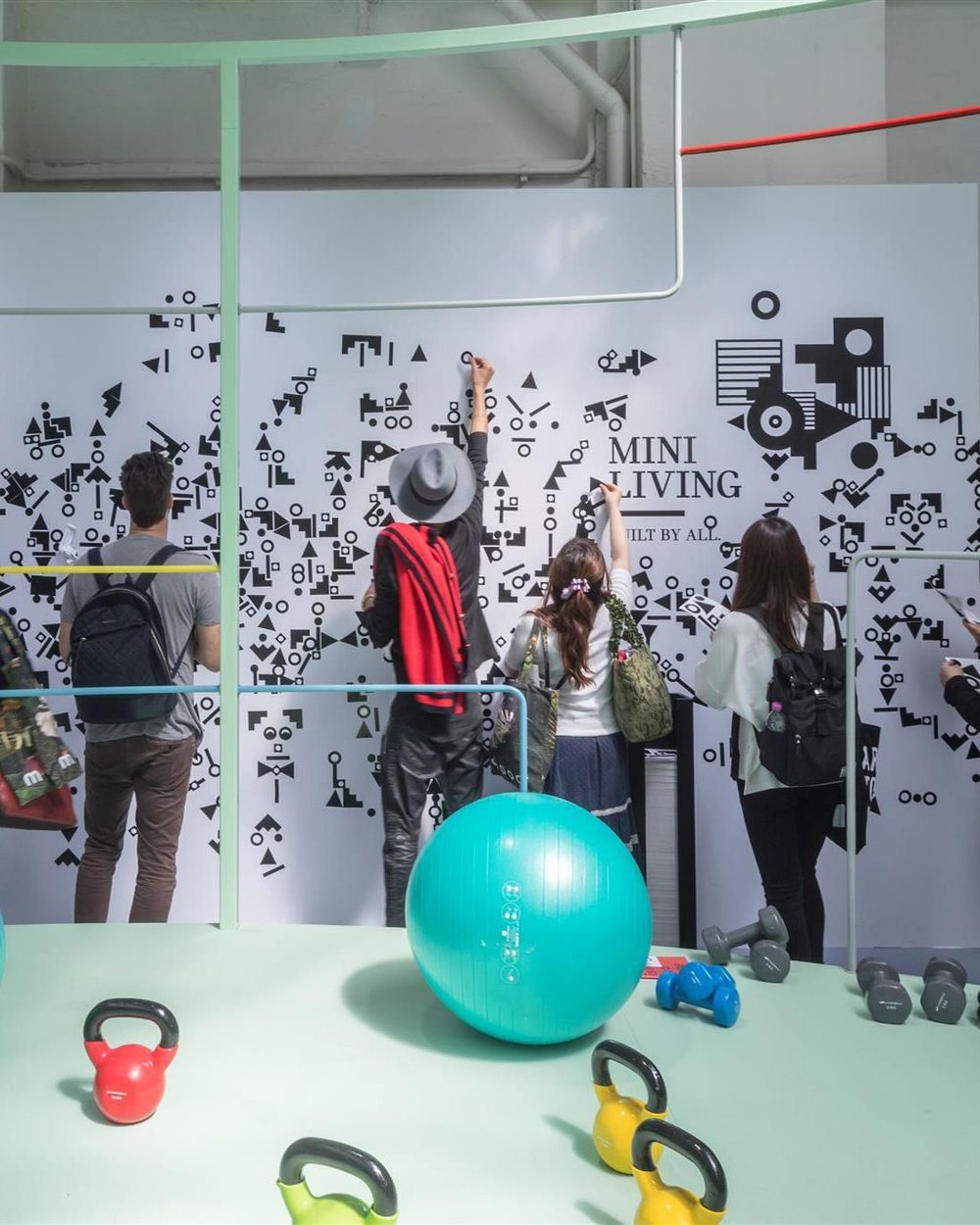During this year’s Milan Design Week, we had the chance to visit MINI LIVING in Zona Tortona. The concept of MINI LIVING is dedicated to THE CREATIVE USE OF SPACE which is a vital topic in the urban environments with a democratic approach named as BUILT BY ALL where the user is integrated in the design process of urban living areas.
Nowadays cities attract more and more people. This creates lack of space per habitant and increases the price of housing. We can easily observe this for example in Istanbul where we are mainly based and Berlin where we have our second office. The rental prices increased dramatically in the last years. Besides this, as business models and the way cities are occupied change in a fast pace, we see unemployed spaces which are waiting for re-use. This influences especially young people. THE CREATIVE US OF SPACE becomes more relevant with taking this phenomena into consideration.
Whenever we entered the U-shape courtyard of a historical industrial building used as storage in the past, we felt directly the power of community. This courtyard was filled with life thanks to the interactive outdoor furniture and the easy access from the street to the courtyard as well as from the courtyard to the two main spaces; on the right side the FACTORY OF IDEAS and on the left side the MINI LIVING installation.
We first took a tour along the BUILT BY YOU installation by Oke Hauser, the Creative Lead of MINI. He explained us the conceptual framework of this year’s installation and how the user is integrated in the design process. Being modular, having smaller private and bigger communal spaces, bringing varying living functions together and underlying the strength of community are some of the prominent topics MINI LIVING is bringing to the discussion of future of urban living spaces. In the end, the main goal of this work is to support the living quality of residents in urban environments.
We also met Nina Tolstrup of renowned design and architecture studio Studiomama. She took us around while explaining the architectural concept. Color is used in a very gentile and tasteful way, which is at the same time categorizing the different functions dedicated to urban living. The sorbet tones give a fresh and energetic feeling. Each unit in the MINI LIVING installation can be adapted to the needs and wants of the users as it is based on a modular system connecting different living functions as well as private with communal spaces. This contemporary approach for architecture is experienced by the visitors as all the private and communal units can be entered, the furniture, décor and books can be touch and the whole atmosphere can be re-imagined by the visitors. We also attended one of the workshops offered at MINI LIVING. In the collaborative kitchen we met with the food designer Francesca Sarti who brought her own approach to food and food styling. This workshop made us experience the MINI LIVING installation more intimately and personally. This was a proof for the fact that users build more emotional connections with spaces once they are filled with life. Other workshops with the professionals from respective fields took place in the collaborative gym and garden as well as in the personal shell dedicated to private use.
In the space named as FACTORY OF IDEAS, we had the chance to create our own models of MINI LIVING. We used various totems in different colors and forms and placed that in a box, which we exhibited in the WALL OF FAME area to share with the community. The long table where we worked on our own model had a very communicative character where we could exchange our experience with the other visitors or better said co-creators.
As a summary this year’s installation of MINI LIVING, BUILT BY YOU gave us valuable insights on building the urban future with a human-centric approach. THE CREATIVE USE OF SPACE brought new ideas in our minds concerning new solutions for urban habitats. Merging design knowledge with the spirit of experience and fun made this year’s MINI LIVING unique. We shouldn't forget that cities can only fulfill community’s needs if the people are involved and engaged in the design process. This conceptual living idea of MINI puts people first by providing tools and skills to build their own future realities with a participatory design approach.






